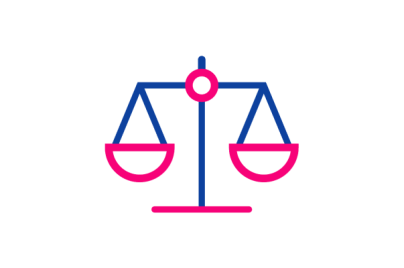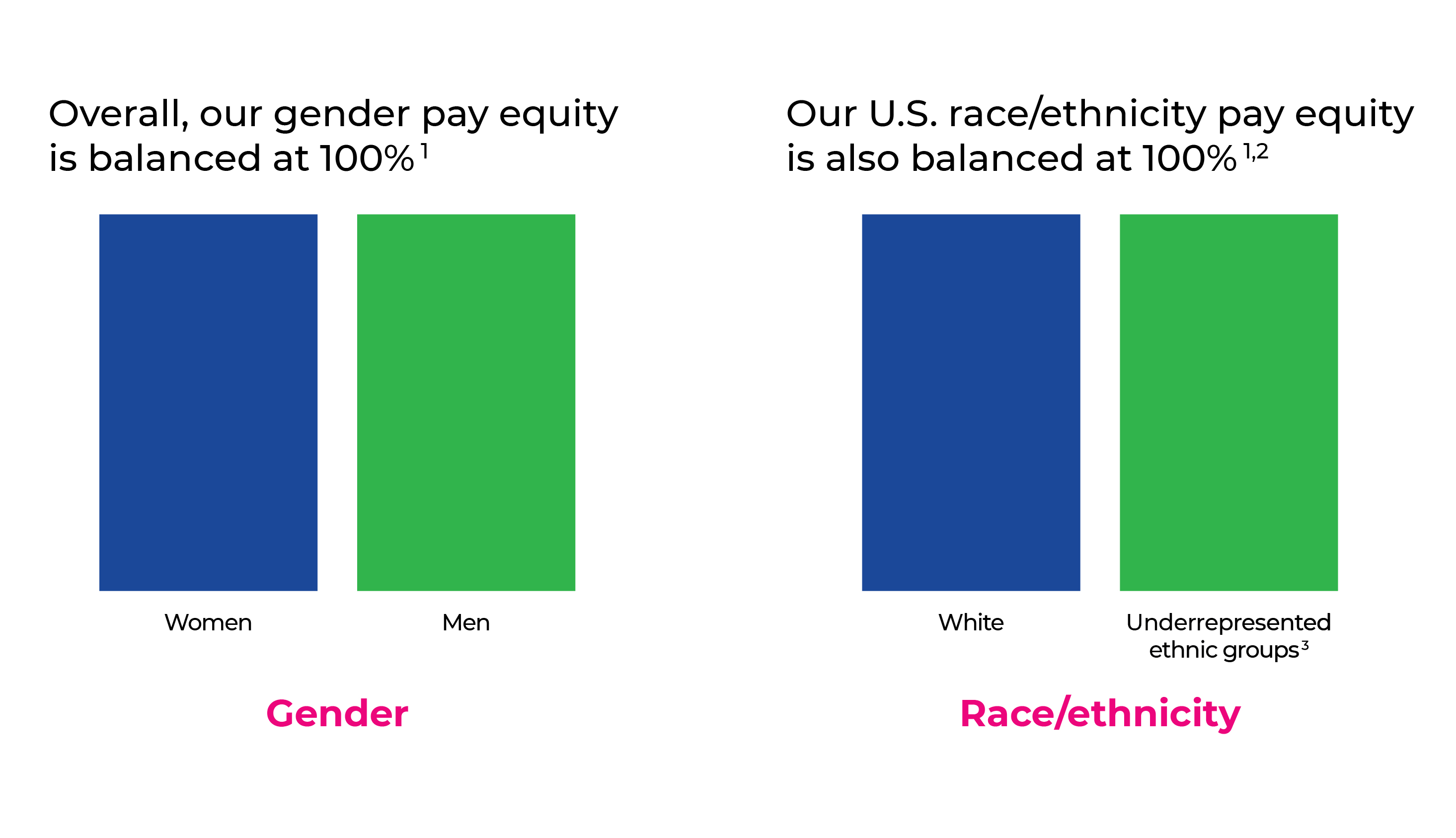
Pay equity
Our goal for pay equity: We aim to achieve pay equity across our global operations.
When it comes to equity, we start by looking at ourselves.
Since our company’s launch, we have completed two waves of studies examining gender (globally) and race/ethnicity (U.S. only) pay equity, representing nearly 50% of our employees.

We’re excited about our progress and our top-tier results – and we know we have more to do.
In 2024, we will capture more countries as we continue our commitment to achieve pay equity across our global operations.
We’re proud that we have achieved 100% balance in pay equity among the approximately 50% of our employees studied in countries across North America, South America, Europe and Asia/Pacific.

In 2023, we engaged external economic and legal experts and expanded from our first pay equity study to cover a notably larger number of employes than the 2022 study.

The 2023 study showed that we have achieved 100% balance in pay equity for similarly situated female and male employees in equivalent positions.1

Additionally, the 2023 pay equity study for the United States showed that we have achieved 100% balance in pay equity for similarly situated non-White (including Black, Hispanic, and Asian employees) and White employees in equivalent positions.1,2
These studies were conducted as a follow up to the studies conducted in 2022 — a commitment that was declared in our 2022 ESG Report.
Continuing this commitment
Going forward, we intend to continue to use comprehensive evaluative approaches to support equitable decision-making regarding compensation allocation within our organization. These include regular pay equity studies in more countries during the next two years and the continuation of our Performance and Rewards @ Organon program, which is designed to help foster pay equity practices.
Progress

1 Adjusted to account for legitimate labor economic factors.
2 Due to local legal and regulatory requirements, there was insufficient information available to conduct this second analysis outside the United States.
3 Underrepresented ethnic groups are defined as: Asian, Black, Latino/Hispanic, and other ethnic groups (e.g., American Indian, Alaska Native, Native Hawaiian, or other Pacific Islander).